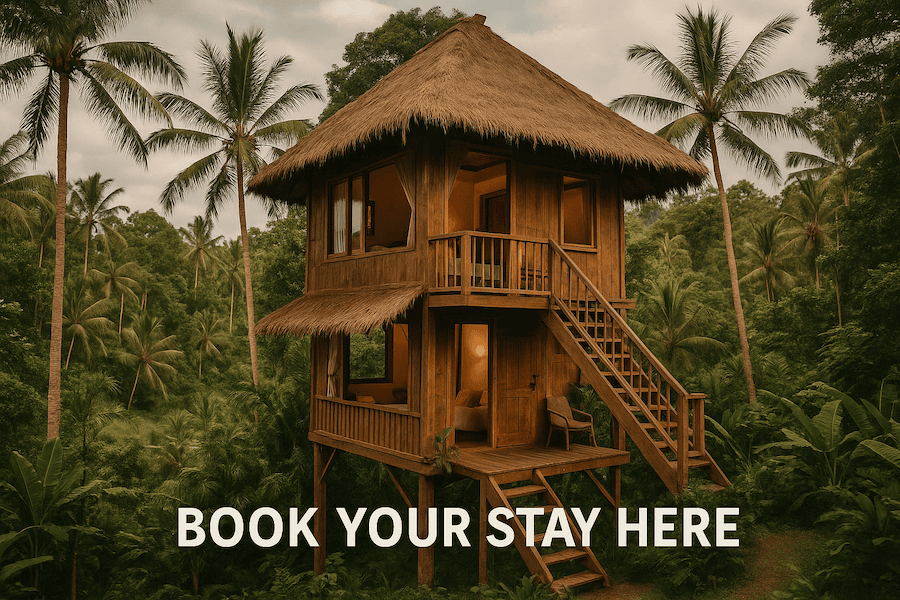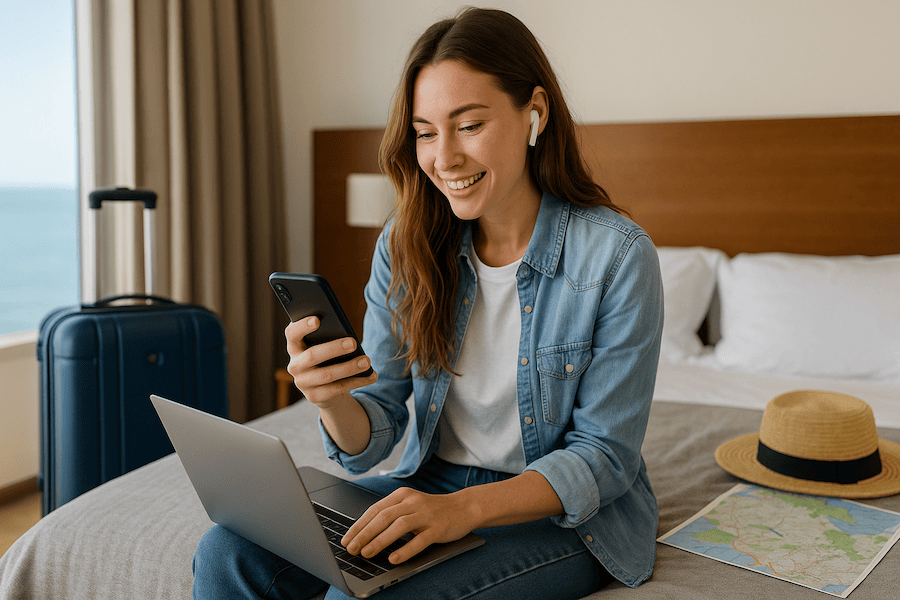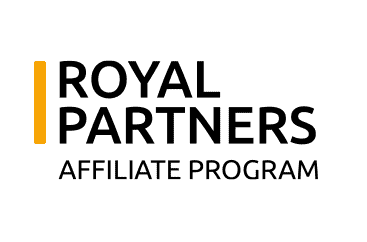How to Leverage Social Media for Travel Affiliate Marketing

Social media has transformed affiliate marketing within the travel space. Marketers can now enjoy near endless opportunities to reach, engage—and convert—audiences. If you’re an affiliate looking to capitalise on the ever-growing travel industry, learning how to use social media platforms like Instagram, Facebook, TikTok, and Pinterest effectively can have a massive impact on your success.
Here are some tips on how to strategically use social media to optimise your travel affiliate campaigns and convert more users into clicks!
Choosing the Right Platforms
If you want to run successful affiliate marketing campaigns on social media, the very first thing you need to do is understand which social media platforms best-align with your niche—and target audience.
Instagram, for example, is a visual-driven social media site, making it ideal for showcasing travel destinations, accommodation options, and unique travel experiences. Pinterest is great for attracting users wanting inspiration for future trips, while TikTok’s short-form videos are perfect for sharing engaging, quick insights into travel.
Facebook, with its diverse user base and powerful ad targeting capabilities, allows affiliates to reach highly-targeted audience segments, but requires a slightly different approach as it’s less visual than Instagram.
Spend some time thinking about the types of consumers you want to attract and then look at what social media sites—and content formats—are most likely to appeal to them.
Crafting Compelling Content
Once you’ve chosen the right platforms, your next priority is content. Social media users are bombarded with visuals and captions every second—so your content needs to stand out. Start by focusing on value: ask yourself what your audience wants to see, learn, or feel. For travel affiliate marketing, that could mean sharing hidden gems, packing tips, destination guides, or budget-friendly itineraries.
You should also be aware that visuals matter. High-quality photos and videos of breathtaking landscapes, cosy stays, or cultural experiences can stand out instantly – and you should consider using storytelling to make your posts relatable.
Rather than just saying “Check out this hotel,” for example, consider sharing a brief personal story or traveller insight that makes the recommendation feel authentic. Think captions like “This little treehouse in Bali was our quiet escape after a hectic week in Ubud—here’s why I’d recommend it to anyone who needs to unwind.”
Also, don’t forget to add clear calls to action. Whether it’s “Book your stay here,” “Find flights now,” or “Click the link in bio,” you want to make it easy for users to take the next steps. After all, you’re not just looking for engagement here—you want to actually convert!

Building a Loyal Community
If you want to succeed in the long run in travel affiliate marketing, building a loyal community is just as important as promoting the right deals. A loyal following trusts your recommendations, engages with your content regularly, and is far more likely to click your links and make bookings. Rather than just chasing likes and views, you’ll want to focus on creating real connections.
How? Start by showing up consistently.
Post regularly, reply to comments and DMs, and be genuinely present in your niche. Ask your audience questions, encourage them to share their travel experiences, and create space for conversations.
For example, ask “What’s your dream destination for 2025?” or run polls in Instagram Stories. This helps develop a two-way relationship—something most marketers neglect to do—and also builds a sense of belonging!
You should also consider using user-generated content, if you can. For example, if your followers tag you in travel photos or share experiences using your tips, repost their content (with permission) and celebrate them!
Lastly, don’t be afraid to share parts of your journey. People follow people—not brands. If your audience feels like they’re part of your story, they’re more likely to stick around, trust your insights, and follow your affiliate recommendations when planning their next trip.
Optimising Your Social Media for SEO
Social media and SEO might seem like separate worlds, but when combined correctly, they can have a big impact on your affiliate marketing results. Optimising your social media profiles and content for search not only increases your visibility on platforms like Instagram and TikTok—it can also boost your discoverability through Google and other search engines.
Start by making sure your bio includes relevant keywords. Think like a traveler searching for inspiration: phrases like “budget travel tips,” “luxury getaways,” or “Europe backpacking guide” can help you show up in platform searches. Add a clickable link to your website, blog, or link-in-bio tool that includes your affiliate URLs.
Hashtags are another powerful tool. Use a mix of broad and niche hashtags (e.g., #TravelDeals, #BaliOnABudget, #FamilyTravelTips) to increase your reach. On Pinterest and YouTube, titles and descriptions should be keyword-rich and clear—these platforms behave more like search engines and reward well-optimised content.
Remember to caption your visuals with SEO in mind. Descriptive alt-text, engaging captions, and tagging relevant locations can help your content surface in location-based or topical searches. The more searchable your content, the more opportunities you create for users to discover—and click—your affiliate links.
Leveraging Analytics for Growth
To truly succeed in travel affiliate marketing, you need more than great content—you need data. Leveraging analytics allows you to understand what’s working, what’s not, and how to optimise your efforts for better performance and higher conversions.
Start with native platform analytics. Instagram Insights, TikTok Analytics, Pinterest Analytics, and Facebook Page Insights can show you which posts are getting the most engagement, when your audience is most active, and what demographics you’re attracting. Use this data to fine-tune your posting schedule, content themes, and formats.
Equally important is tracking your affiliate links. Use link trackers like Bitly or affiliate dashboards (e.g., from Booking.com, Skyscanner, or Awin) to see which posts are driving the most clicks and conversions. If a specific post or Reel performs well, consider boosting it with paid promotion or recreating it with a similar angle.
Also pay attention to patterns over time. Are your followers engaging more with hotel recommendations or destination guides? Are videos outperforming static images? Analytics help you move from guesswork to strategy, so you can double down on what delivers results and continuously evolve your content.
Practical Tips to Maximise Your Social Media Impact

Using the five tips and strategies above, you can optimise your social media campaigns to be as effective as possible. Here’s a few additional things to think about when running campaigns:
- Regular Posting Schedule: Maintain consistency by establishing and sticking to a regular posting schedule. Consistent posting boosts your visibility, builds audience expectation, and helps establish a stronger brand presence—but don’t overdo it!
- Leverage Stories and Short Videos: Platforms like Instagram Stories, Facebook Stories, and TikTok allow you to share short-form video content that can, when used correctly, create urgency and drive quick action from your viewers.
- Collaborate Smartly: Partner with travel brands, influencers, and other affiliates who complement your niche. These partnerships can expand your audience reach, enhance your credibility, and create additional monetisation opportunities.
- Use Strong Calls to Action: Clearly instruct your audience on the steps you want them to take. Whether you want them to book a hotel, sign up for a newsletter, or click an affiliate link, strong and clear CTAs significantly boost conversion rates.
Final Thoughts
Social media offers immense potential for travel affiliates willing to approach it from the right mindset. Once you’ve selected the most appropriate platform, decided on how to create compelling content, and optimised for visibility – it’s all about consistency and treating your audience as more than just buyers, but as people.
The travel affiliate marketing industry is more competitive than ever, but there’s plenty of opportunities for affiliates willing to think outside the box – and following the strategies we’ve outlined on this page is a solid start!
Are you interested in what’s next for the industry, tips on how to always remain proactive and making sure that you never miss an insight that could boost your performance? Join Affiverse’s newsletter here






